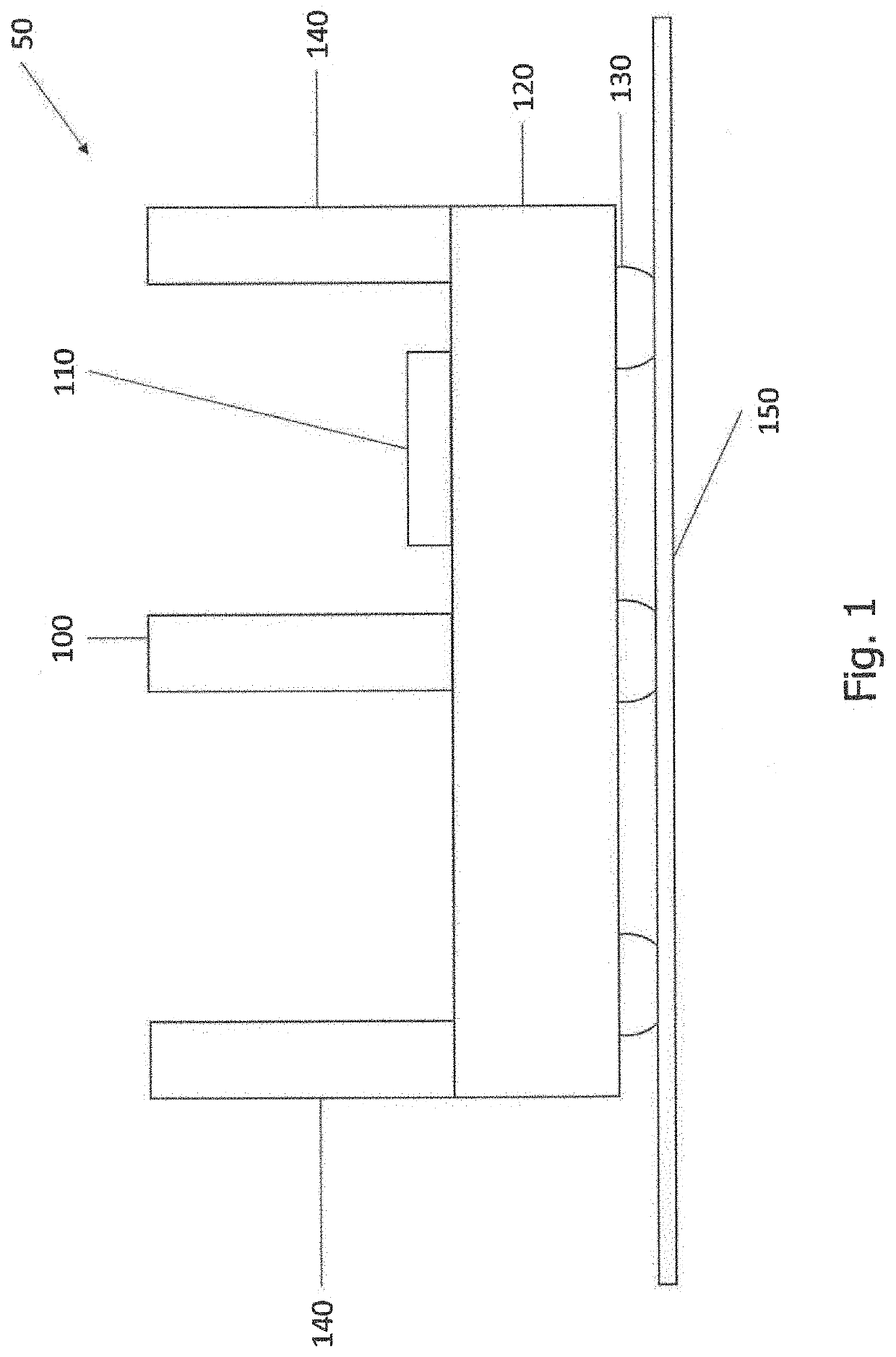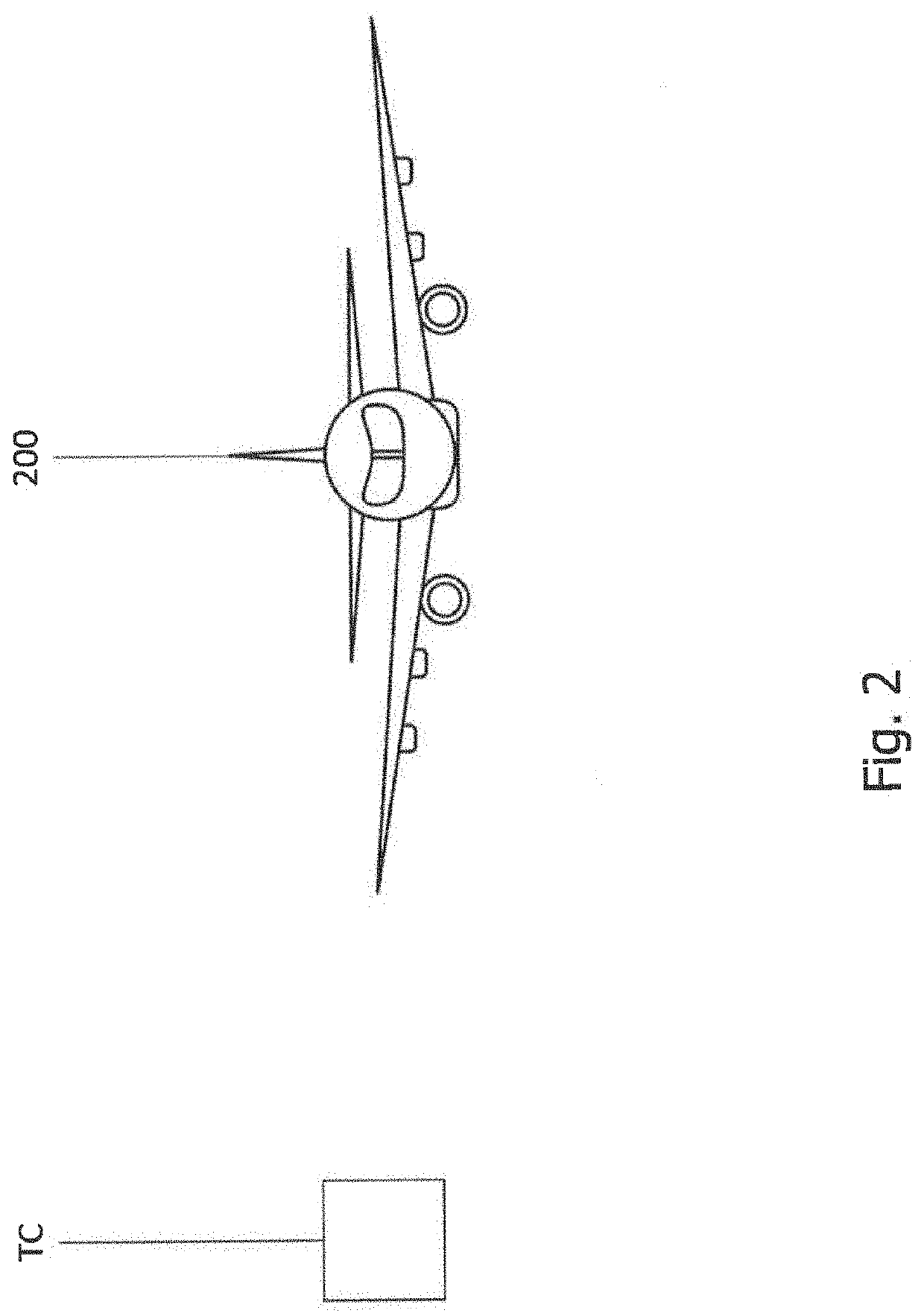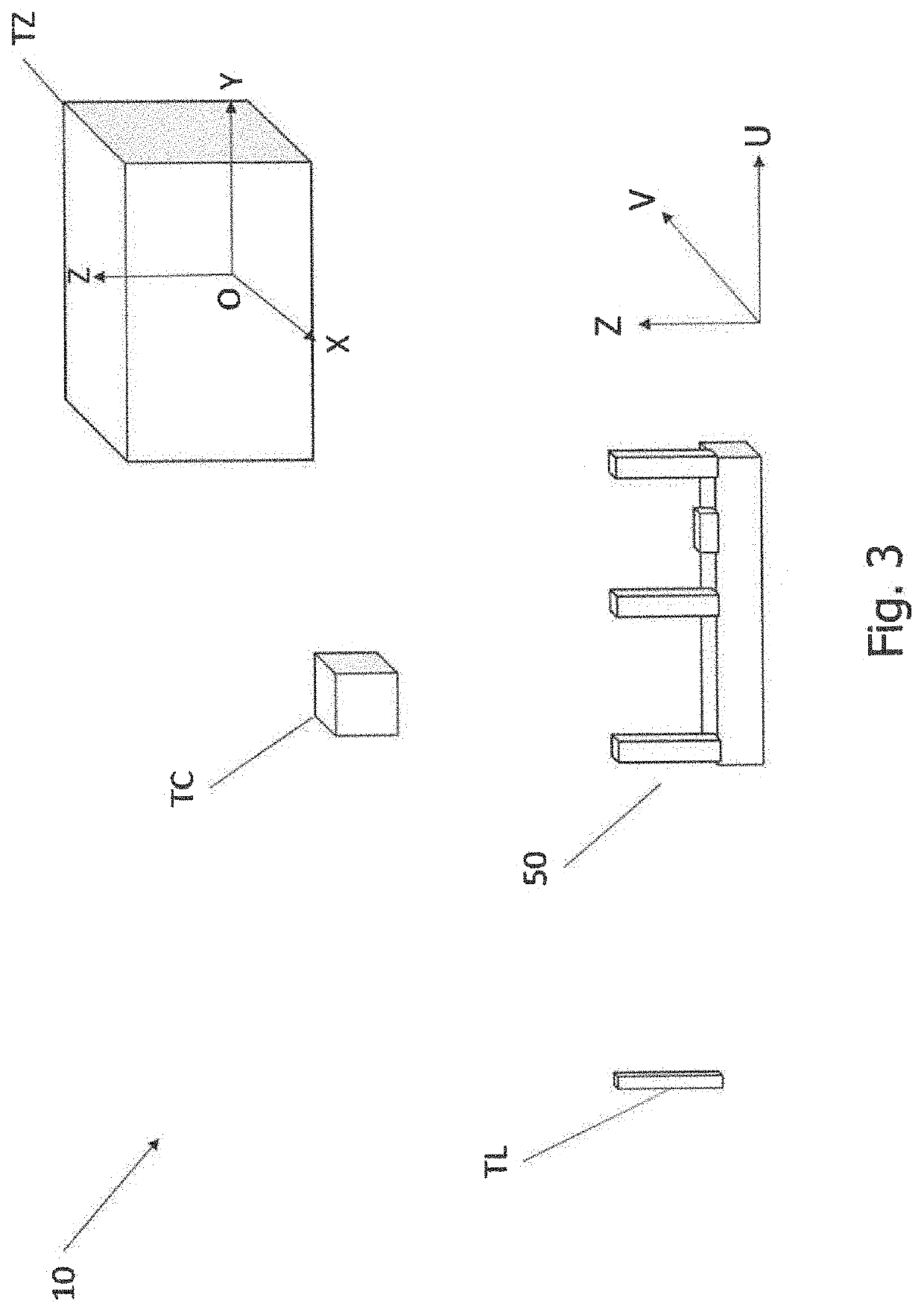Arrangement and a Method for measuring a Radar Cross Section
a technology of radar cross section and arrangement, applied in the direction of measuring devices, instruments, using reradiation, etc., can solve the problems of high investment and maintenance costs of a chamber to measure large objects such as real-size aircraft, and the effect of maintenance, and reducing the cost of operation
- Summary
- Abstract
- Description
- Claims
- Application Information
AI Technical Summary
Benefits of technology
Problems solved by technology
Method used
Image
Examples
Embodiment Construction
[0053]FIG. 1 shows a schematic diagram of the carrier and the components on and around the carrier according to an embodiment described herein.
[0054]In this example, the carrier assembly 50 comprises a first antenna 100, a housing 110 comprising the VNA and the HGE, the carrier 120 containing a motor, a plurality of wheels 130, two second antennas 140 and a rail 150. The first antenna 100 may alternatively be an antenna pair or an antenna array.
[0055]The first antenna 100 is a vertical array antenna which will be described in more detail below. The vertical array antenna allows for diversity to filter out the ground plane effects in the postprocessing which will also be described in more detail below. The first antenna 100 comprises a transmission unit and a receiving unit which transmits signals towards the object (see FIG. 2) for which the RCS is being measured and a receiving unit which receives the signals reflected from the object. Alternatively, these units can be combined int...
PUM
 Login to View More
Login to View More Abstract
Description
Claims
Application Information
 Login to View More
Login to View More - R&D
- Intellectual Property
- Life Sciences
- Materials
- Tech Scout
- Unparalleled Data Quality
- Higher Quality Content
- 60% Fewer Hallucinations
Browse by: Latest US Patents, China's latest patents, Technical Efficacy Thesaurus, Application Domain, Technology Topic, Popular Technical Reports.
© 2025 PatSnap. All rights reserved.Legal|Privacy policy|Modern Slavery Act Transparency Statement|Sitemap|About US| Contact US: help@patsnap.com



